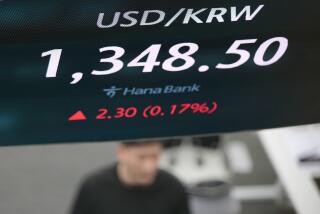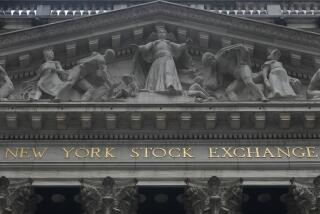Dow and Nasdaq again close at record highs

It’s the market that continues mostly upward, even though there’s still plenty to worry about.
The Dow Jones industrial average and the Nasdaq closed at record highs yet again Tuesday, and the S&P 500 closed barely below the all-time high it reached a day earlier.
The gains in recent weeks have been driven by company earnings that haven’t been nearly as terrible as Wall Street was expecting, interest rate cuts, hopes for a trade truce and a steadily growing economy. In all, the S&P 500 is up 22.7% so far this year, putting it on pace for its best year since 2013.
The upbeat mood marks a pivot from the summer, when worries about trade, Britain’s potentially messy exit from the European Union and the slowing global economy loomed over the market.
Wall Street got through the bulk of third-quarter earnings season last week, and the results were much better than what investors had been anticipating.
As of Friday, 71% of the members of the S&P 500 index have reported their results, and 76% of them have been better than forecast, according to FactSet. Also, 61% have reported higher than expected sales, which is important in the wake of concerns about an economic slowdown and the U.S.-China trade war.
This doesn’t mean earnings have been stellar. Expectations were low this quarter, and on a whole, profits in the S&P 500 are down 2.7% from a year ago, according to FactSet. But since companies are beating investors’ mediocre expectations, it’s provided the market with a base on which to rally upon.
The U.S. economy has repeatedly defied fears of a recession, which had resurfaced in late summer and early fall as trade tensions escalated. Reports on jobs, growth and consumer confidence in the past couple of weeks have pointed to an economy that is overcoming global threats and expanding for a record-long 11th straight year.
Last week, the government estimated that employers added 128,000 jobs in October. It was a modest gain, but the figure was depressed by the temporary loss of about 50,000 striking GM workers and the subtraction of 20,000 short-term Census jobs. Excluding those drags, the job gain would have been much higher. The government also revised up its estimate of job growth for August and September.
Overall, the data suggested that most employers have looked past risks from a global slowdown and the U.S.-China trade war, threats that had caused much concern just a couple of months earlier. Over time, increased hiring tends to fuel consumer spending, which, in turn, could help lift corporate earnings and share prices.
The government also said last week that the nation’s gross domestic product, the broadest gauge of economic growth, expanded at a 1.9% annual rate in the July-September quarter. Though sluggish, that figure was roughly in line with the average annual growth throughout the expansion that began in 2009. It suggested that the economy remains resilient.
And on Tuesday, an index that measures growth in the economy’s vast service sector — made up of industries ranging from restaurants to banking to health care — rose in October to show solid expansion after having touched a three-year low in September.
With recent signs of a thaw in the trade war between the Trump administration and China and lessening fears of a hasty and disorderly exit by the United Kingdom from the European Union, it’s possible that U.S. companies will soon resume investing in machinery, computers and other equipment to expand their businesses. That would provide another source of growth for the U.S. economy, in addition to the consumer spending that has nearly alone driven the expansion for the past six months.
In Tuesday’s trading, the Dow climbed 30.52 points, or 0.1%, to 27,492.63, the S&P 500 fell 3.65 points, or 0.1 percent, to 3,074.62 and the Nasdaq composite rose 1.48 points, or less than 0.1%, to 8,434.68.
The price of U.S. crude oil rose 69 cents to settle at $57.23 a barrel. Brent crude, the international standard, rose 83 cents to $62.96 a barrel. Wholesale gasoline rose 1 cent to $1.67 per gallon.
Gold fell $27.20 to $1,480.80 per ounce, silver fell 49 cents to $17.52 per ounce and copper fell 3 cents to $2.70 per pound.
The dollar rose to 109.24 Japanese yen from 108.64 yen on Tuesday. The euro weakened to $1.1065 from $1.1127.






